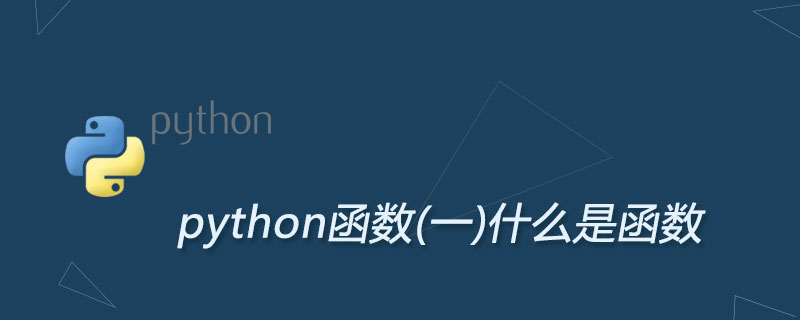

Friends who have been exposed to the C language must be very familiar with the word function. No matter which programming language it is in, a function (of course it is called a method in some languages) has the same meaning. ) all play a vital role. Today let’s learn about function usage in Python.
1. Function definition
In some programming languages, function declarations and function definitions are separated (in these programming languages, function declarations and function definitions can appear in different files (such as C language), but in Python, function declaration and function definition are regarded as one. In Python, the basic form of function definition is as follows:
def function(params):
block
return expression/valueHere are a few points:
(1) Use the def keyword in Python to define a function without specifying a return value type.
(2) Function parameter params can be zero, one or more. Similarly, function parameters do not need to specify parameter types, because variables in Python are weakly typed, and Python will automatically Maintain its type.
(3) The return statement is optional. It can appear anywhere in the function body, indicating that the function call execution ends here; if there is no return statement, NONE will be automatically returned. If there is a return statement, but return If there is no expression or value after it, NONE will be returned.
Look at two examples below:
def printHello():
print 'hello'
def printNum():
for i in range(0,10):
print i
return
def add(a,b):
return a+b
print printHello()
print printNum()
print add(1,2)The above is the detailed content of Python function (1) What is a function. For more information, please follow other related articles on the PHP Chinese website!
 How to start mysql service
How to start mysql service
 How to skip network connection during win11 installation
How to skip network connection during win11 installation
 How to solve the problem that the phpstudy port is occupied
How to solve the problem that the phpstudy port is occupied
 How to repair win7 system if it is damaged and cannot be booted
How to repair win7 system if it is damaged and cannot be booted
 xenserver
xenserver
 Is Code Red a computer virus?
Is Code Red a computer virus?
 stackoverflowatline1
stackoverflowatline1
 How to cancel Douyin account on Douyin
How to cancel Douyin account on Douyin
 What are the differences between Eclipse version numbers?
What are the differences between Eclipse version numbers?